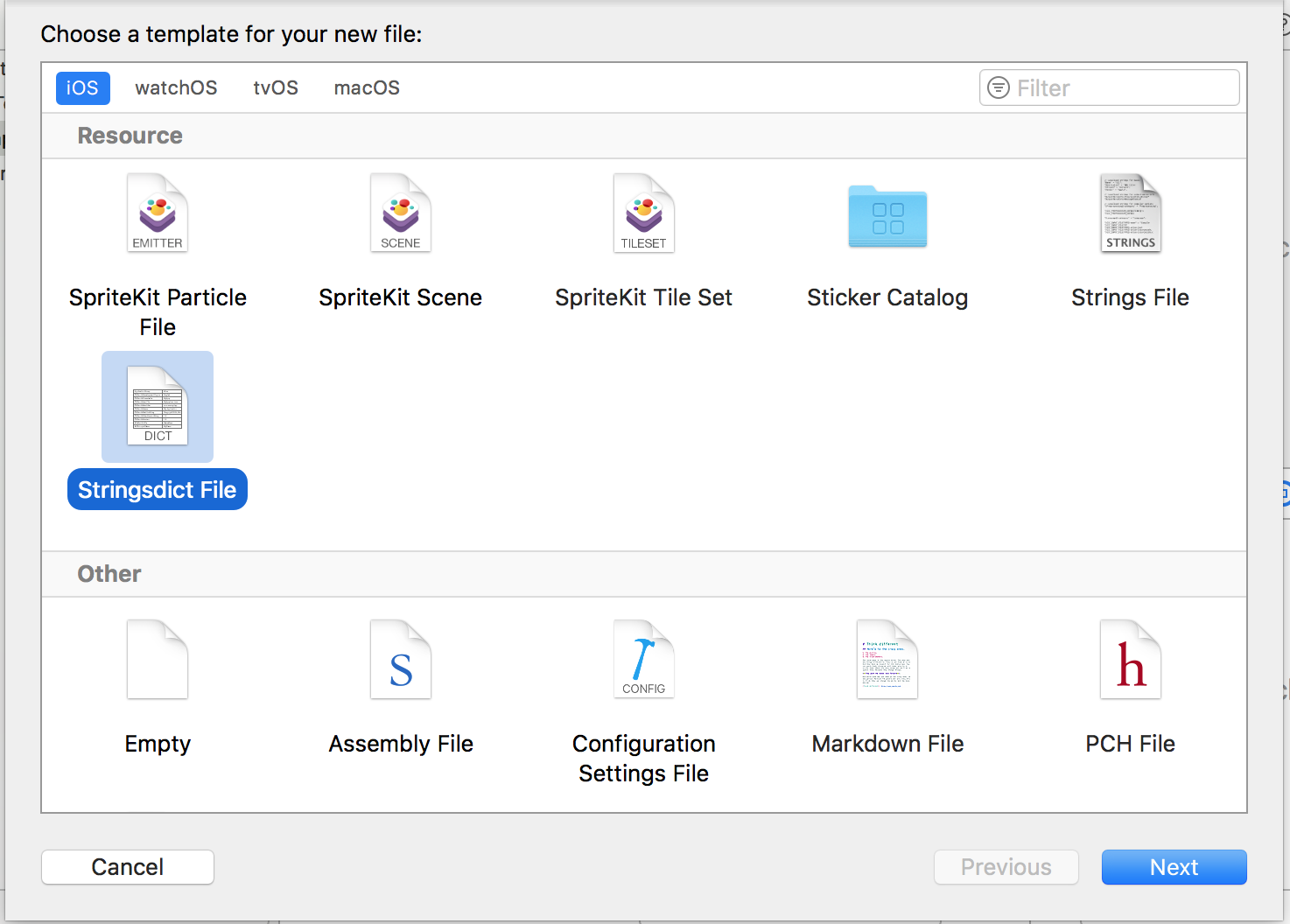Xcode 9 brings a surprising amount of localization updates that make it easy for developers to internationalize their apps. These changes are also helpful for the translators and localization companies like us. We want you to implement these localization features in Xcode, so let me tell you about them!
Test your app in any language/region in Xcode 9
The Test scheme editor has a couple of excellent new localization features in Xcode 9. It used to be time-consuming to see what your app looks like in each  language. Now all you have to do is set the language and region in your automated Test.
Notice another nice addition: Show non-localized strings. This should help you find those hard-coded strings you forgot to internationalize in the first place!
Grab localized screenshots too
Tests can capture screenshots as well. There are two great reasons capturing screenshots with Tests for localization.
- Use the localized photos to send to translators. Did you know Babble-on has a whole developer portal just for testing your localized screenshots? It’s the BEST way to ensure your localized iOS or Mac app is ready to ship worldwide.
- Remember the App Store? Love it or hate it, users are much more attracted to localized screenshots of your app than seeing the English.

You can now write a single Test to capture screenshots in all your localized languages. That is a huge timesaver!
XCTAttachment(screenshot:app.screenshot())
There are a couple of new pseudolocalization languages to try out in Xcode 9 as well, including better right-to-left support to test Arabic and Hebrew. The new right-to-left pseudolanguage actually writes your English “backwards” so you know how it feels:
Lorem ipsum   ->  muspi meroL
Plurals with Stringsdict gets full support in Xcode 9
In Xcode 9, export and import of localizations via XLIFF now supports stringsdict files. Next question: what’s a stringsdict? Stringsdict is a dictionary file that helps your app handle the many plural rules in foreign languages without a single line of code. You may not know this, but many languages have more than one plural form. Your sly code (if num >1) to add an ‘s’ to each word never actually worked for Russian… or Arabic… or dozens of other languages. Now you have an easy way to implement the right solution. Note that this can only work when you have a formatted string — a ‘%d’ type number of items for Xcode to parse.
Stringsdict has actually been the way to do plurals in iOS and Mac for a couple of years now, but it’s finally getting much-needed support in Xcode 9. You can view stringsdict files in a format that makes them much easier to create and to read. Xcode 9 also has templates so you can add plurals with a couple of clicks.
 More importantly, Xcode will export your plural lines in the XLIFF you give to translators. It even knows how many plural forms each language will need (though your translator should know this too, don’t you think?)
More importantly, Xcode will export your plural lines in the XLIFF you give to translators. It even knows how many plural forms each language will need (though your translator should know this too, don’t you think?)
And in another “finally” moment, Xcode can view XLIFF files in a nice table format natively. Just double-click on your XLIFF to see. (Before you’d just get the raw XML, which was a mess to read or debug.)
Adaptive strings in Xcode 9
In that same Stringsdict format, Apple has allowed for another useful trick. They call it Adaptive strings. Essentially, this means you can have Xcode pick at runtime which text to use based on how much room is available in the UI. In English, that means you could have a long heading on an iPad screen like:
Worldwide Developer Conference 2017
but use a shorter one on iPhone:
WWDC 2017
It’s not based on screen size, as you might expect. It’s actually about the text length and what can fit. For internationalization that means you can add some abbreviations or alternate wording in languages that just don’t fit your UI (I’m looking at you, German). It’s done very similarly to plurals. You, or more likely your translator, adds in optional wording for each situation and the user’s device sees the correct text at runtime. Pretty cool, right? Of course there are other important ways to make sure there is room in your UI for internationalization: Auto Layout and variable constraints.
Under the radar localization changes in Xcode 9
One small but welcome change in Xcode 9 are warnings. Interface Builder now tells you if a view’s fixed constraint can cause localization problems, such as cutting off the text with the dreaded ellipses. If you can’t solve this on your own after battling with Auto Layout, talk to us and we’ll help you with shorter translations free of charge on anything we did for you!
According to the release notes, Xcode 9 now uses “\n†and “\t†instead of literal newlines and tabs in the strings files it creates. It does understand both the old and new forms, though. Xcode 9 can also export source files with encodings other than UTF-8. It used to fail in those situations, so that’s a good thing!